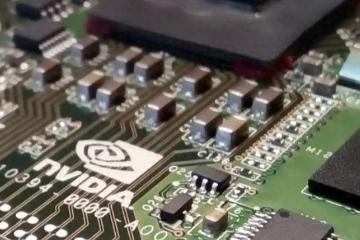- Finance
- October 18, 2024
- (98) comments
NVIDIA Enters the $100 Billion Club
Advertisements
As we approach 2024, a significant milestone is looming on the horizon for NVIDIA, a company that has surged ahead of its competitors in the semiconductor industryAnticipation mounts as forecasts suggest that NVIDIA’s revenue could soar past the remarkable threshold of $100 billion, marking what many are calling the dawn of the true NVIDIA eraThis projection comes in light of their financial results released on May 22, 2024, detailing an impressive quarterly revenue of $26.044 billion for the first quarter of fiscal year 2025 (FY2025 Q1), which concluded in April 2024. Their operating income reached a staggering $16.909 billion, culminating in an astonishing operating margin of 64.9%. It is worth noting that, throughout my 35 years in the semiconductor industry, encountering a manufacturer boasting such high profit margins is almost unheard of, throwing into question the comparative financial performances of other renowned corporations.
To put this in context, let’s traverse back to NVIDIA’s performance trends from 2017 onwards, particularly observing the spike post the release of OpenAI’s ChatGPT on November 30, 2022. We witnessed a rapid expansion in NVIDIA’s sales and operating income, transitioning from a focus largely on gaming graphics processing units (GPUs) to a diverse range of applications, especially in data centers commencing around mid-2022. As of April 2023, just two years post-ChatGPT’s debut, the data center segment’s revenue hit $22.6 billion, making up an impressive 86.7% of NVIDIA’s total revenue.
NVIDIA’s fiscal year, however, operates on a different timeline comparably with giants like Intel, Samsung Electronics, and TSMC, all of which utilize the calendar year for their accounting processes
Advertisements
For instance, NVIDIA’s FY2025 Q1 spans from February to April 2024, while FY2025 Q2 covers May to July 2024, adding complexity when drawing direct comparisons between quarterly sales figuresSuch discrepancies reveal that during the period from December 2023 to January 2024, NVIDIA remarkably occupied the number one position in semiconductor sales, a feat they continued to achieve from March into April 2024.
However, the pressing question remains: how long can NVIDIA sustain this explosive growth trajectory? The persistent GPU shortage, driven largely by two primary bottlenecks—the intermediary layers and high bandwidth memory (HBM)—threatens to limit NVIDIA’s potential as TSMC produces these components crucial for NVIDIA’s CoWoS (Chip-on-Wafer-on-Substrate) packaging technologyGiven the recent advancements in CoWoS, both HBM installation quantity and the intermediary layer's required area for upcoming chips have increased significantly, presenting challenges that have compelled the industry to reconsider long-term production strategies.
The growing size of these intermediary layers becomes a pertinent issue
Advertisements
As semiconductor manufacturing standards rise, especially on 12-inch silicon wafers, the number of usable intermediary layers extracted diminishes drasticallyFor example, if intermediary layers reach an area of 3400 mm², mathematical calculations reveal that there may only be around 21 layers obtainable from a single wafer; however, when factoring in defects on the edges, this number plummets to a mere nine usable layersMoreover, considerations around yield rates further exacerbate this number, bringing the realistic count of quality intermediary layers to approximately six per wafer.
Looking ahead to 2026 and beyond, predictions point towards further escalation in the size of these layers, with reports claiming that by then, the size could extend to 5.5 times that of the mask sizeSuch growth only compounds the issue; for instance, a projected 6864 mm² intermediary layer by 2027 could potentially result in fewer than four layers per wafer
Advertisements
Furthermore, cases citing intermediary layers 40 times larger than the masks themselves forecast even more sobering realities for production capabilities—leading to scenarios where only one usable layer might emerge, effectively zero if any critical layers face defects.
Consequently, while TSMC announces plans to double production capacities, it is increasingly apparent that the intermediary layer shortages will not simply resolve themselves with increased manufacturing outputThe potential shift to square-shaped organic or glass substrates as opposed to relying solely on 12-inch wafers presents a long-term solution, yet adaptation for the necessary tooling and software could stretch several years into the future.
These industry dynamics hint that NVIDIA's predicament with GPU shortages is unlikely to be alleviated in the near term, reflecting broader supply chain challenges within the semiconductor landscape
- China Chips Away at Global Semiconductor Slump
- Japan's Semiconductor Industry: Can It Rebound?
- U.S. and European Markets Close Lower
- Surge in Chinese Assets!
- Is the U.S. Planning to Build a Bitcoin Reserve?
Moreover, as NVIDIA’s GPUs remain in high demand, by late May 2024, the prices of their “H100” graphics cards had soared to approximately 5.5 million yenAnticipation bubbles around the next-generation H200 and B200 GPUs possibly commanding even higher prices, especially amid claims that the Blackwell B200 GPU could approach a staggering 11 million yen in price per unit.
Therefore, the market does not seem poised for a downturn in GPU prices; on the contrary, indicators suggest a continuing upward trendThe latter translates not only to sustained revenue growth for NVIDIA but solidifies their formidable position within the tech sectorWith growing sales forecasts—$22.1 billion in January 2024 and $26 billion in April, culminating to $76.1 billion by fiscal year-end—NVIDIA is indeed on track to surpass the coveted $100 billion milestone this year.
In conclusion, as NVIDIA races against the clock to cement its dominance over the semiconductor realm, the stakes have never been higher
